A Guide To Indian Dance | Dance Forms Of India
Indian dance is ancient, unique and the most celebrated way of cultural and traditional expression. No matter the occasion, Indian dances always add to the beauty of it. Music and Indian dance always go hand in hand to bring out a result that’s much more than just being fantastic.
Have you ever tried any of the dance forms of India? Or have you ever seen them being performed with utmost energy? Whatever your answer is, skim through this blog now to feel the vibrations of Indian dance and music from toe to head!
History of Indian Dancing
The whole of India dancing to the rhythm of various Indian dances was not a one-day thing. Let’s take a step back into the history of Indian dance and culture.
- It all started back in Pre Vedic Period when different dance forms became an important part of the social life of people.
- In Vedas, the word “Nritya” has been used in various places which translates to different forms of dance.
- The Aryans gave Nritya a spiritual meaning, considering Indian dancing a way of purifying one’s soul
- By the time of Ramayana, Indian dances had completely developed along with music and instrumental playing. In Rajputs, a trend of “ Gharanedari” began and during this period the artists started confining their art of dance to themselves.
- As per Hindu mythology , dance in Indian culture is believed to have been conceived by Brahma.
What is the Indian dance called?
Usually referred to as Nritya, there is no single name to refer to the various types of dance in India. Various dance forms of India include Bharatnatyam, Kathak, Odissi, Mohniattam, Bollywood style and other Folk dances of India.
Here’s a little brief about all of them –
Types Of Indian Dance
Have you ever visited various places in India? If you have, you know it’s impossible to capture the beauty of Indian culture and dance in a few words. However, we have tried to cover almost every aspect in a crisp for you.
Indian Traditional Dance Forms
Traditional Indian dancing is like melodies dancing on the floor! Isnt it?
Kathak
Kathak is one of the classical dance forms of India widely practised in Northern Indian states like that of Uttar Pradesh, Rajasthan, Delhi and even parts of Western and Eastern India. The term “Kathak” has been derived from the Sanskrit word “Katha” which means story and “Kathakar” refers to those people who perform this art of storytelling through this Indian traditional dance.
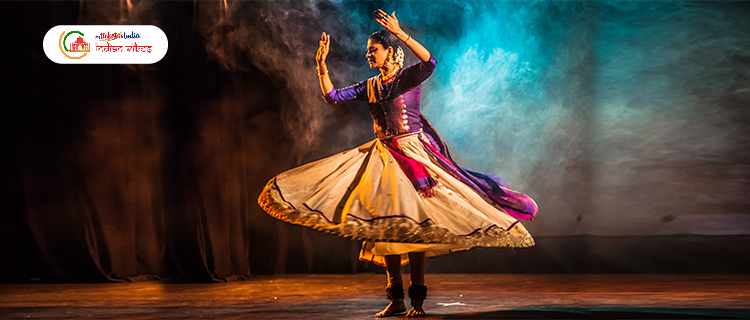
One of the eight Indian classical dance forms, the Kathak dance of India has three Gharanas-
- The Jaipur Gharana – focuses on foot movements
- The Banaras Gharana – focuses on facial expressions
- The Lucknow Gharana – focuses on hand movements
In a nutshell, this classical Indian dancing is all about wearing ghungroos , controlling one’s foot movements as per the rhythms of the music and telling a story with the use of hands and eyes. The eyes act like a mirror, reflecting the whole story the Kathakar is trying to communicate.
Dhrupad,one of the ancient types of music in India and Thumri is usually played on Tabla to accompany this dance form.
Bharatnatyam
Performed in Tamil Nadu (Southern India), Bharatnatyam is one of the first traditional dance forms of India to be refashioned as a theatre art. Considered to be the oldest dance in Indian culture, this dance is completely based on the myths and texts from religious records.
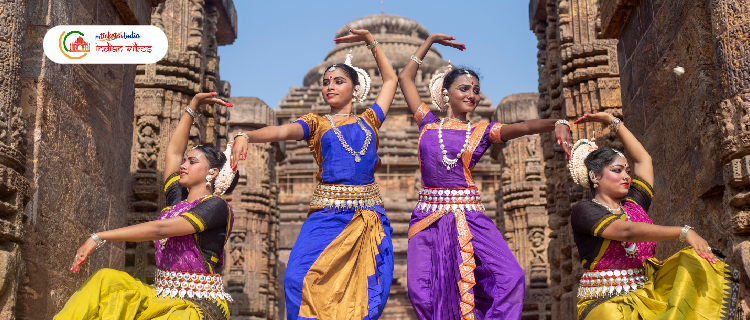
Earlier known as Sadir or Dasi Attam, Bharatnatyam is a Hindu dance style that consists of expressive body language, precise and sharp body language and graceful eye movements. The phrase “Bharat” is a mnemonic that can be explained as:
- BHA- Bhava or emotions
- RA- Raga or melody
- TA- Tala or rhythm
Hence, Bharatnatyam is one of the various types of popular dances that include the expression of Hindu spiritual tales and myths through expressive gestures and body movements. South India’s Carnatic style usually accompanies this dance form.
Kathak Vs Bharatanatyam
Whether it’s Kathak or Bharatanatyam, both form a part of classical Indian dancing. However, both of them are not the same.
| KATHAK | BHARATANATYAM |
| Northern Indian Cultural Dance. | Southern Indian Dance. |
| Requires stamina and speed. | Requires balance and strength. |
| Fast-paced dance form with emphasis on rhythm and speed of movements. | Slow dance form with emphasis on the grace and fluidity of the dancer. |
| Usually based on tales of Lord Krishna and Goddess Radha. | Generally based on the tales of Lord Shiva. |
Mohiniattam
One of the most famous dances in Kerala, Mohniattam is deeply connected with the temples of Kerela and based on rhythms that are not fast. The footwork is very soft and gentle opposite to that of Kathak.
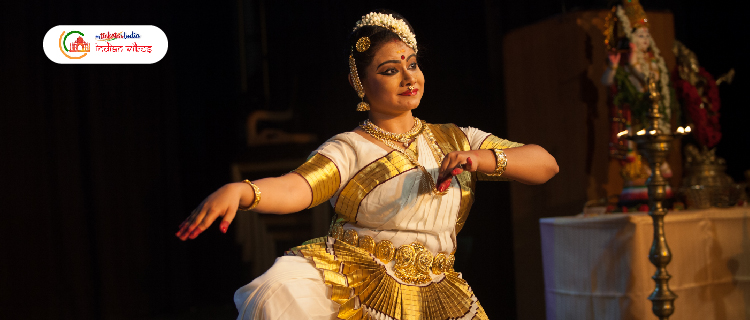
A semi-classical dance form, it has a legend attached to it as per Hindu mythology –
It is said that Lord Vishnu took the form of the enchantress Mohini to seduce the Asuras with her wit and beauty and conquer the enemies. These moves of Mohini are very gracefully captured in the india dance steps of Mohiniattam.
The main instruments used during the performance include the Maddalam, the Mridangam, the Veena, the Edakka, the Flute, and the Kuzhitalam or Cymbals.
Suggested Read: Best Places To Visit In Chennai (South India)
Kuchipudi
One of the most important among the 8 classical dance forms of India, Kuchipudi has its roots in Andhra Pradesh where it developed as a result of the Bhakti movement. It derives its name from a village named Kuchelapuram.
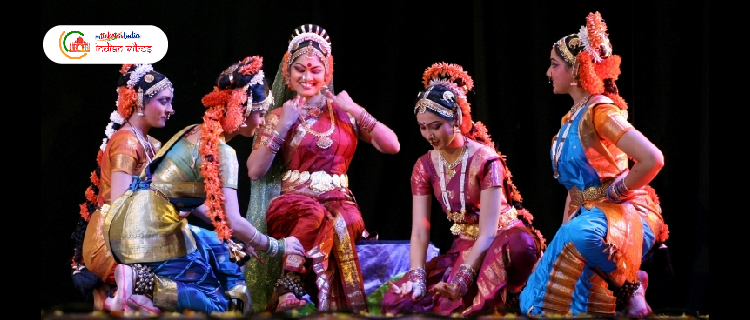
Kuchipudi is a dance drama –
- Nritta – pure dance and jatis
- Nritya – expressional dance and sabdams
- Natya – drama and acting with mudras
Usually accompanied by Carnatic music, Kuchipudi combines both speech and pure dance.
These were some of the classical dances of India.
Other famous dancing name list include Odissi, Sattriya, Kathakali and Manipuri.
Folk Dance Forms Of India
Folk dances of India add to the beauty of the rich Indian culture, Don’t they?
Dandiya Raas , Gujarat
One of the most famous traditional dances in India, a folk dance of Gujarat, Dandiya Raas is specially performed during the festival of Navratri. Both men and women dance together to the tunes of dholak and tabla with ladies twirling their colourful chaniya choli and ghaggras and men following the steps with the utmost energy.
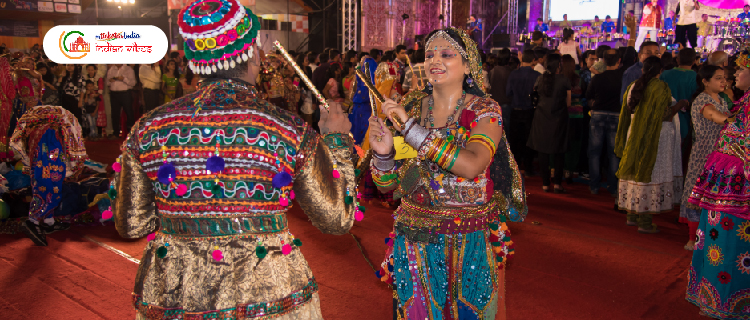
Dandiya refers to wooden sticks painted in bright colours and adorned with lovely designs. People strike these dandiyas in rhythmic beats and move in circles while they perform and enjoy this cultural Indian dance.
Bihu, Assam
Among the other famous Indian folk dances is Bihu of Assam which is not just a dance but also a cultural event, a kind of festival celebrating the change of seasons. The word Bihu has been derived from “Bishu” which means to pray to god during harvest season for prosperity and blessings.
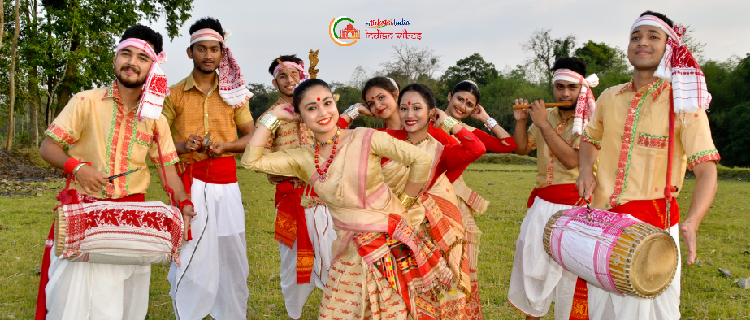
Bihu dance is characterised by brisk dance steps, graceful and fast hand movements and rhythmic swaying of the hips. People wear traditional attires like dhoti, gamocha & chadar.
Lambadi, Andhra Pradesh
Lambadi is performed by females of semi-nomadic tribes called “Lambadis or Banjaras” of Telangana. The dance revolves around simple themes like harvesting, planting and sowing and is accompanied by male drummers. In fact, the hand movements of women performing this Indian dance correlate with the theme.
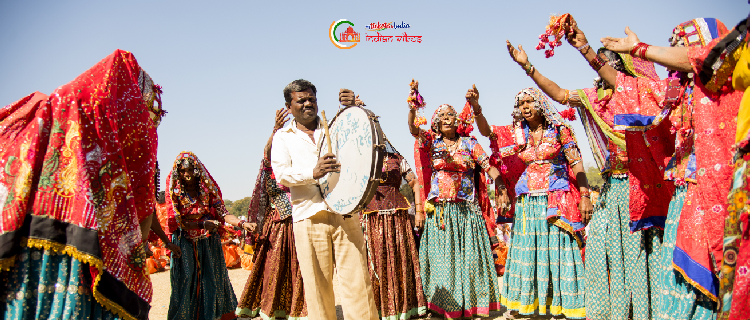
Women wear colourful sarees in Rajasthani styles ( Lambadi has its roots in the state of Rajasthan) decorated with mirror work.
Kaikottikali, Kerala
One of the famous and unique dances from India, Kaikottikali also known as Kummikkali is a renowned temple dance performed by both men and women during the festival of Onam.
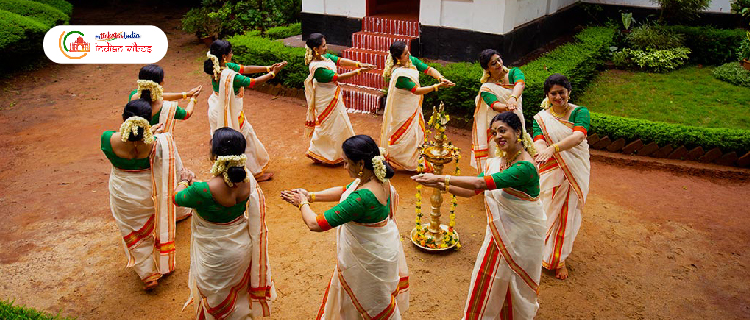
The word “Kaikottikali” refers to the hand gesture of clapping hands by dancers, usually 8 to 10 in number accompanied by Thiruvathira paattu , which means folk stories describing the love of Goddess Parwati and God Shiva and their separation from each other.
As per Indian dance traditions, it is believed that if an unmarried girl performs this Indian culture dancing correctly, she will get a husband as good as Lord Shiva.
And the list is never-ending!
Other dance name List for Folk Dance –
- Bhangra, Punjab
- Hojagiri, Tripura
- Rangama, Nagaland
- Kud Dandi Nach, Jammu & Kashmir
- Jhumar, Haryana
And much more! We suggest you visit India for once and see the beauty of these dances for yourself!
Suggested Read: Everything about Indian and Australian visas
Frequently Asked Questions
Q: There are how many classical dance forms in India?
A: There are a total of eight classical Indian dance forms namely Kathak, Kathakali, Bharatnatyam, Kuchipudi, Odissi, Mohiniattam, Sattriya and Manipuri. Now, as per the Cultural Ministry Of India, Chauu has also been made a part of the list.
Q: What is the national dance of India?
A: Even though no specific dance form is considered a national dance of India, usually Bharatnatyam is considered as the oldest and the most famous dance form.
Q: What is Indian dancing called in the scriptures?
A: As per the Vedas, the term “Nritya” has been used to define various dances like Bharatanatyam dances of India.
Q: What is an Indian club dance?
A: Dance for India is not just restricted to traditions and folk dances but also includes freestyle dance and Bollywood dances solely done for entertainment purposes in the clubs.
Q: Does AirAsia fly to Ahmedabad?
A: Yes, AirAsia flies to Ahmedabad. Recently, it has even launched some new routes to Ahmedabad connecting travellers from Australia to West India.
We are glad you came reading till here! Want more of it? Do visit IndianVibes, a sister portal to MyTicketsToIndia, for more such informative pieces.
And, if you are willing to book cheap Australia to India Flights (and back), then we have got your back too! At MyTicketsToIndia, we offer amazing deals and discounts that will help you save big.
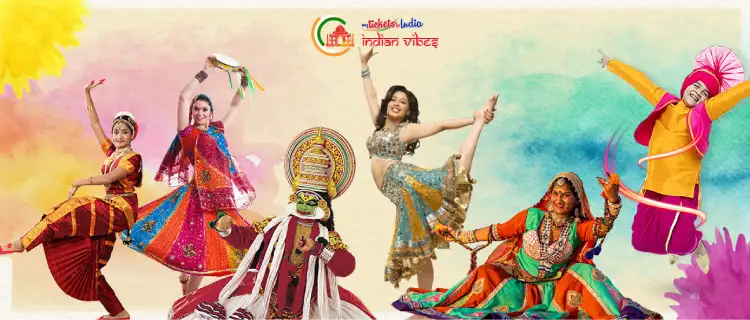
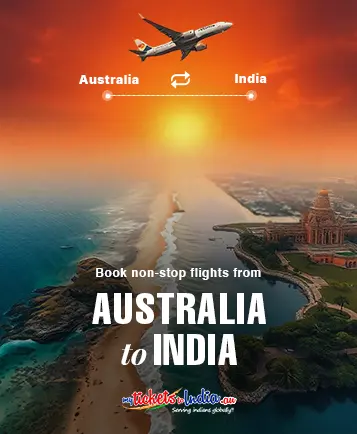

Discuss this post ?